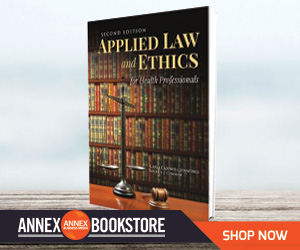| |
| |
 |
 |
| |
 |
|
@{mv_date_MMM d, yyyy}@ |
|
| |
For many emerging adults, the period between 18 and 25 years of age marks a stage of life to explore what matters to them and assume new legal rights and responsibilities, including their own private health information and medical decision-making. But this transition to independence can create sticky family dynamics, especially when emerging adults remain on their parents’ health insurance plans.
» Read more...
Melatonin, which is often prescribed for insomnia, favors a state of bronchoconstriction and weakens the relaxing effect of a bronchodilator through the activation of the melatonin MT2 receptor.
» Read more...
A new study shows that the infant immune system is stronger than most people think and beats the adult immune system at fighting off new pathogens.
» Read more...
|
| |
 |
 |
| |
|
| |

On a daily basis, healthcare professionals are faced with many ethical situations along with legal implications. Applied Law and Ethics for Health Professionals, Second Edition tackles ethical situations and the potential legal impacts that many healthcare professionals may face in their careers and asks them to consider their own personal values system and use reasoning skills to come to an informed outcome. Modern cases and topics are discussed, offering real-world ethical and legal accounts that may impact professionals in the field. As the text concludes, readers are again asked to gauge their growth, exploring their newly formed knowledge, values, and opinions on healthcare ethics.
» Shop now |
| |
|
| |
 In our practices, we often see patients who achieve fantastic results using concepts like circuit training and running in general. They can improve their shape by losing weight and elevating muscle tone, but sometimes they forget to pace their regimen and fall into the trap of overtraining. Although it is part of our practice to run a business, it is foremost our duty and obligation to explain to patients why they just can’t keep coming back to get treated for us to “fix them up.”
» Read more...
In our practices, we often see patients who achieve fantastic results using concepts like circuit training and running in general. They can improve their shape by losing weight and elevating muscle tone, but sometimes they forget to pace their regimen and fall into the trap of overtraining. Although it is part of our practice to run a business, it is foremost our duty and obligation to explain to patients why they just can’t keep coming back to get treated for us to “fix them up.”
» Read more... |
| |
|
| |
|
|
| |
| |






